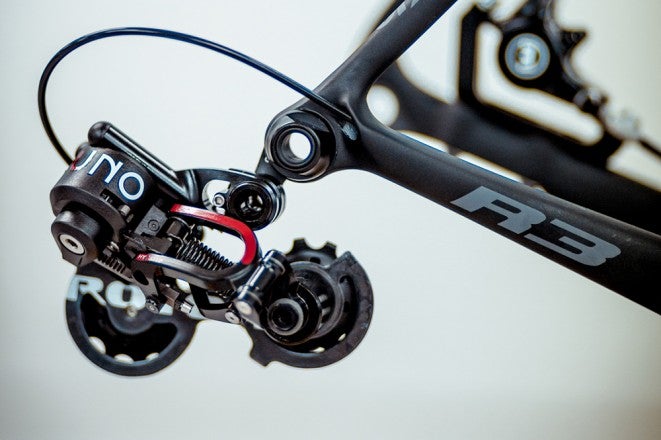Inside-out toothed belt is a tell.
I think that this is some sort of misunderstanding, and here is why.
The Capstan effect, which you mentioned, is related to regular belts (such as V-belts, for example), which rely on friction between the belt surface and the pulley (drive or driven). Timing belts use teeth that mesh with the teeth on the pulley (drive or driven), so friction is not a factor (at least, not a significant one).
I think when you say 'inside-out belt' and mention the Capstan effect, you are assuming that the timing belt teeth in the BikeOn application do not mesh with the teeth of the red wheel (we call it the rotor), but rather the flat side of the belt rubs against the rotor and relies on friction to deliver the torque from the driving pulley to the rotor.That is the only explanation I have for the 'inside-out belt' phrase.
To clarify, the BikeOn timing belt application is classical: there is an entrance point where the toothed side of the belt meshes with the rotor, then the teeth mesh with the rotor and exit the meshing area.The wrap angle might be smaller than what you have seen, but it is a typical timing belt application.To make things clear, here are the sequential steps that explain the timing belt application of BikeOn:

As you can see, there is nothing 'inside-out' or unusual about the BikeOn timing belt application. The teeth mesh with the teeth on the rotor, just as in any other application.
During the course of the design work, we have had multiple consultations with engineers from Gates Corporation, Continental Industries' belts divisions, and more. We have run multiple finite element analyses and other extensive calculations. We have devices out in the field in the hands of our users; we have conducted lifetime, vibration, and many other tests.
My team and I have put our hearts and souls into this product, hoping it will be useful for many.
We have older users who either don't want to or can't convert their bikes into electric ones for a variety of reasons (including a sentimental attachment to a bike, which was a gift from mom for an 18th birthday and has been with him ever since for over 50 years now—we have such cases as well). This device brings them the joy of riding their bikes again and having an active lifestyle.
Seeing that is a huge reward in itself for us. Probably one of the biggest rewards.




